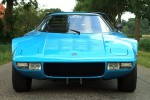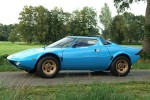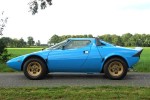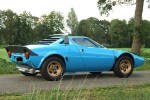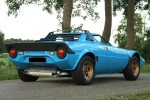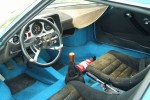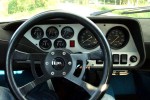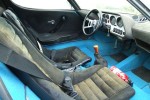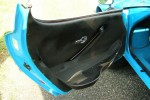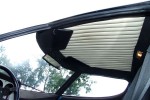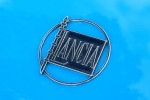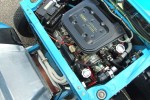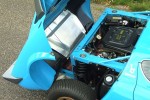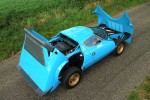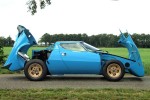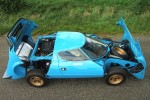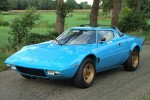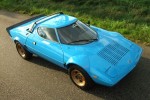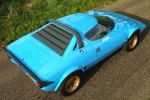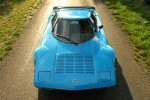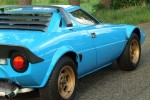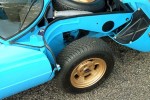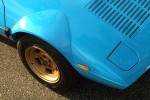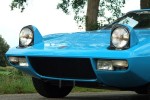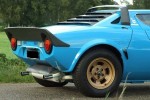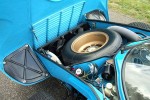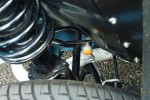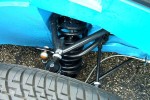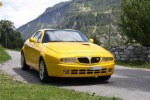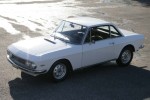Lancia Stratos HF Stradale
- 1977
- 12.000 km
- Restored
- EU title
- EU taxes paid
- Sold
By any standard, the Lancia Stratos was a big success both in and out of competition. Developed as a homologation special for rallying, it became a cult car after production ceased and is now highly prized as the modern classic.
Though conceived strictly for rallying, the distinctive Lancia Stratos makes an exciting road car, though it's far from GT standards in luxury and refinement.
The Stratos had no direct ancestors, strictly speaking, though its midships drivetrain was lifted intact from Ferrari's Dino 246 GT. Here it's important to recall that in 1969, Fiat took over Lancia, then in financial trouble, and also acquired 50 percent of Ferrari.
European rallies had been Lancia's main motorsports venue since the early Sixties. The firm's standard-bearer, the front-drive Fulvia coupe, was becoming outclassed by 1970. The Stratos was developed to take over for it and make Lancia the outright world rally champ.
It all began in 1970 when Bertone presented an utterly impractical Fulvia-powered dream car at Turin. Also called Stratos, it prompted Lancia team director Cesar Fiorio to push for a very different purpose-designed rally machine, which the new Fiat managers promptly approved.
As ever, there was a minimum production requirement: 500 units, an awkward figure that would necessitate funds for at least semi-permanent tooling as well as design and development.
Fiorio naturally masterminded the project, which envisioned a short, wide coupe with transverse midships drivetrain. Ing. Tonti lent an assist, as did former Lamborghini chief engineer Giampaolo Dallara and ex-Ferrari engineering chief Mike Parkes.
Bertone was immediately contracted to style the beast and build its unit body and chassis structure.
Fiorio, having studied every possible powerteam in the Fiat/Lancia group, secured the 2.4-liter V-6 with 5-speed transaxle from Ferrari. An ideal choice, as they'd be installed exactly as in the Dino 246.
All-independent suspension, rack-and-pinion steering, and four-wheel disc brakes were all specially designed. By November 1971, a prototype was ready for display in Turin.
Bertone's body design was rather wicked and minimal. Its most distinctive features were semi-concealed A-pillars and a door beltline sharply upswept to the top of the daylight opening. The shape of the resulting unbroken expanse of glass gave the tunnelback roof the appearance of a futuristic crash helmet.
Like the chassis, the main body structure was steel; weight-saving fiberglass was used for the tilt-up nose and tail sections. Luggage space was provided by a small box above and behind the powertrain, but the spare wheel precluded any up front.
Stratos prototypes took to the rally circuit in 1972, but didn't score a major victory until the Spanish Rally of April 1973. Another year passed before the Stradale model appeared.
Then, with a rush, Bertone and Lancia built 492 cars before September and homologated for Group 4. The Stratos went on to win the World Rally Championship in 74, 75 and 76. Its last major win came in 1979, when a Stratos entered by the Monaco importer won the famed Monte Carlo Rally.
With 190 horsepower in roadgoing trim, the Stratos could exceed 225 km/h. With nicely balanced, if slightly nervous, handling, the kind of car with which you had to become thoroughly familiar before you could really drive flat out.
As with the compact mid-engine Ferraris, however, the Stratos was addictive, and most owners fell in love with it.
“ your classic auto specialist; world-wide collector car expertise ”
We buy, sell, broker, locate, consign and appraise exceptional classic, sports and collector automobiles, arrange transport, customs formalities and registration.
Jaguar, Ferrari and Maserati expertise, though our collection includes a wide variety of other superior antique, vintage, prewar and race cars.
Contact us when you are serious about owning or selling a fine classic motor car or motorcycle. Geneva, Switzerland-based, we serve clients world-wide.
Chemin des Tulipiers | 1208 | Geneva | Switzerland | +41 (0) 787.055.745
